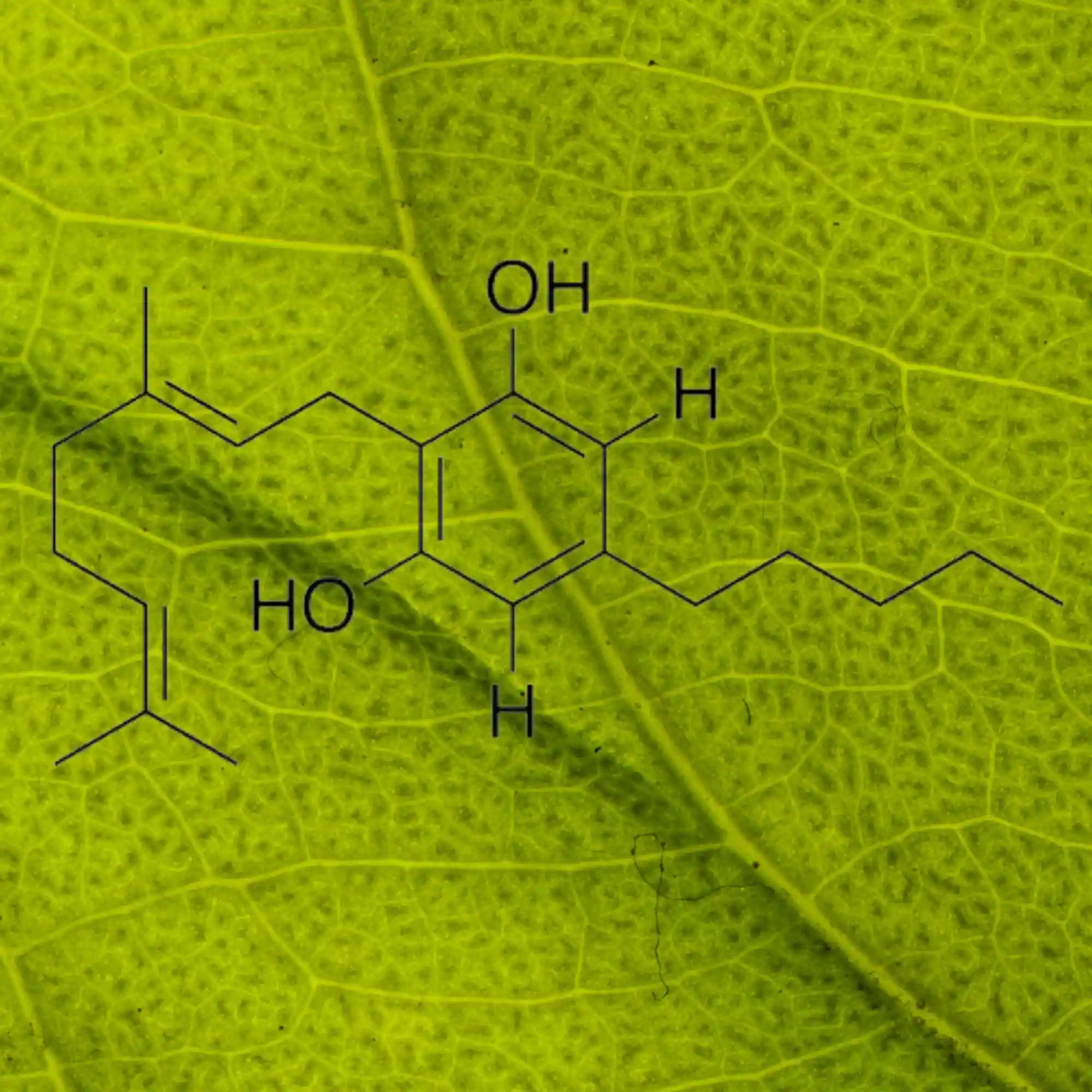Medical cannabis contains a number of different compounds, including major cannabinoids, minor cannabinoids, terpenes and flavonoids.
The two most common major cannabinoids are delta-9-tetrahydrocannabinol (THC) and cannabidiol (CBD). While there has been significant research into understanding the potential effects of THC and CBD, less is known about the potential impact that minor cannabinoids, such as cannabigerol (CBG), can have on patients, although research is ongoing.
What is Cannabigerol (CBG)?
CBG, or cannabigerol, is a naturally occurring minor cannabinoid found in the cannabis plant. CBG is a starting compound found within the cannabis plant from which other cannabinoids, including CBD, are derived.
For this reason CBG is known as the “mother” cannabinoid. It is found most abundantly in young cannabis plants, before it is converted into other cannabinoids, and the quantity reduces.
How does CBG work in the body?
Like CBD, CBG is non-psychoactive, so will not cause any mind-altering effects. Like THC, it binds with both CB1 and CB2 receptors in the endocannabinoid system.
There is a growing interest in CBG, with preliminary studies suggesting that it may show a potential anti-inflammatory quality. It is important to stress that research specifically into CBG is in its infancy.
Although it was first isolated in 1964 by Israeli scientist Raphael Mechoulam, it was until the 2010s that researchers began to focus on CBG and its potential effects.

How does CBG differ from other cannabinoids?
While CBG shares some characteristics with other cannabinoids, there are also a number of differences between each major and minor cannabinoid due to their different structural and atomic make up.
CBG vs CBD
As a minor cannabinoid, CBG is typically found in much smaller quantities than CBD, which is a major cannabinoid. This is one of the reasons why less is known about CBG.
CBD and CBG also behave differently within the endocannabinoid system, which means their potential effects on patients are quite different. Structurally, they are different, with CBG containing more hydrogen atoms, which make it slightly heavier.
While both cannabinoids are ultimately derived from CBGA, CBG is a direct byproduct while CBD comes from either CBGA or CBG itself.
CBG vs CBN
CBN and CBG are both non-psychoactive minor cannabinoids. As minor cannabinoids, there are reduced levels of both CBG and CBN found in the cannabis plant.
According to the entourage effect, which theorises that certain cannabinoids can have a complementary effect on each other, enhancing each other’s potential effects, CBG and CBN have a positive impact on each other.
CBG vs CBC
Cannabichromene (CBC) is another minor cannabinoid, similar to CBG in that both appear in minor quantities and more research into the possible impacts and effects of both needs to be carried out before anyone can say with certainty what the similarities and differences between them are.
Under the entourage effect, CBG and CBC have the potential to cause a positive impact when teamed together.
If you are interested in learning more about CBG, or other aspects of medicinal cannabis, Little Green Pharma has a range of useful educational materials. Head to our medical cannabis hub to find more informative articles related to medical cannabis. If you’re interested in learning about our product selection, check our product hub or fill out the form below.
Contact Us For Free Assistance
"*" indicates required fields
Additional Information on Cannabis Strains
Learn more about the legal landscape surrounding medical cannabis strains in Australia, including regulations governing cultivation, prescription, and usage for therapeutic purposes.
The Legality of Cannabis StrainsLearn about the diverse effects of medical cannabis strains, from energizing sativas to relaxing indicas, and how they can be tailored for Australian patients’ unique therapeutic needs.
Effects of Cannabis StrainsLearn about the intricacies of the cannabis plant, from its rich medical history to the distinct characteristics of indica, sativa, and hybrid strains cultivated in Australia for therapeutic purposes
Cannabis PlantLearn about the diverse world of cannabis strains and their applications in various medical cannabis products, from oils and edibles to vaporised flowers and topicals tailored for Australian patients.
Cannabis Strains and Product TypesLearn about how the cannabis plant is made up of many chemical compounds that contribute to the look, flavour, scent, and effect of the plant.
Chemical Makeup of CannabisLearn about how cannabis compounds work together synergistically to potentially enhance therapeutic effects, including the interactions between cannabinoids, terpenes, and flavonoids in medical cannabis
The Entourage EffectLearn how these diverse plant compounds affect cannabis color and flavor, contribute to the entourage effect, and interact with other plant chemicals to influence potential therapeutic properties
FlavonoidsExplore the distinctive characteristics of Cannabis indica strains – from their compact, bushy structure to their chemical composition and potential therapeutic applications across various medical cannabis products
Medical Cannabis Strains: IndicaDiscover the characteristics of Cannabis sativa strains – from their tall, slender growth pattern to their unique chemical profile and potential energizing effects in various medical applications.
Medical Cannabis Strains: SativaExplore the key compounds in cannabis that interact with the body’s endocannabinoid system, including natural and synthetic varieties, their chemical structures, and how they function in medical applications.
CannabinoidsDiscover CBN, a minor cannabinoid formed from THC degradation, its unique properties, interaction with the endocannabinoid system, and how it compares to other cannabinoids like THC, CBD, and CBG.
Medical Cannabis Cannabinoids: Cannabinol (CBN)Understand terpenes, aromatic compounds found in cannabis and other plants that contribute to smell and taste, their interaction with the body, and their role in the entourage effect with cannabinoids.
Terpenes